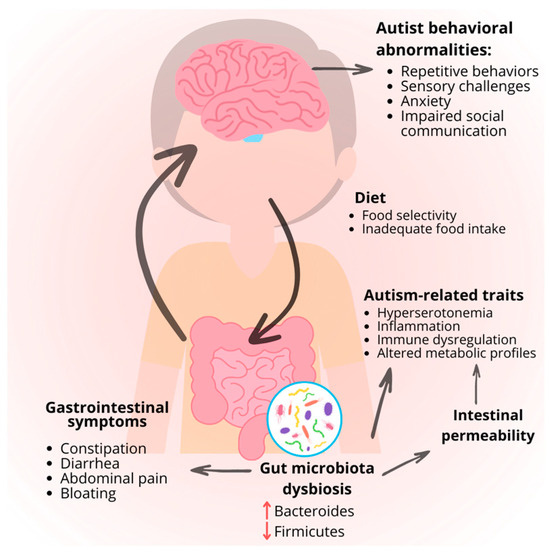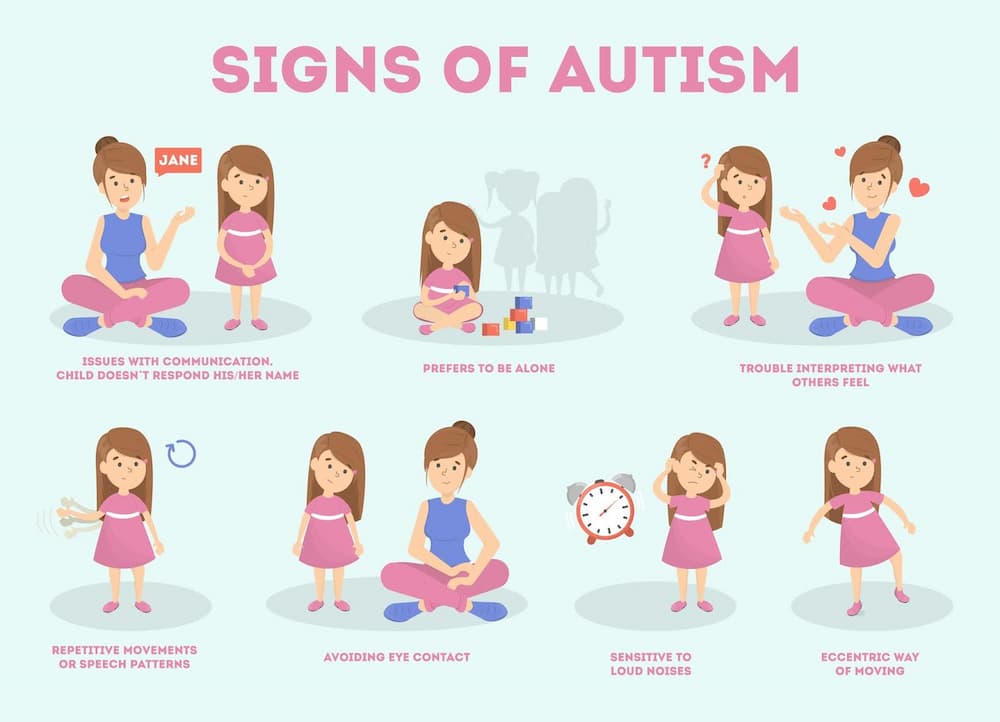Positives of guided interaction guided by an Autism Therapist approach
Positives of guided interaction guided by an Autism Therapist approach
Blog Article
Comprehending the Influence of Behavioral Autism on Life and Social Communications
You might not recognize exactly how deeply behavioral autism influences day-to-day live and social communications. Individuals on the range often browse a world loaded with communication obstacles and sensory overload. These obstacles can bring about disappointment and seclusion, impacting their relationships and overall wellness. Understanding these subtleties is necessary for promoting helpful settings. What methods can we apply to produce even more comprehensive areas and purposeful connections? The answers might amaze you.
Specifying Behavior Autism and Its Characteristics
Behavioral autism, often described as autism range disorder (ASD), encompasses a series of conditions identified by difficulties in social communication, communication, and repeated habits. You may observe that people with ASD typically have a hard time to analyze social hints, which can lead to misunderstandings in conversations. They might discover it hard to establish eye call or involve in tiny talk, making social situations really feel frustrating.
Interaction difficulties can materialize in different methods, from delayed speech advancement to a choice for making use of fewer words. By recognizing these qualities, you can cultivate a setting that advertises acceptance and urges efficient communication, helping people with autism flourish in their everyday communications.
The Range of Autism: Understanding Variability in Behavior
Autism spectrum problem (ASD) isn't a one-size-fits-all diagnosis; it varies commonly amongst individuals. You may observe that some people with ASD show light symptoms, while others may face extra substantial obstacles. This irregularity can manifest in habits, interests, and sensory sensitivities. You might experience people who are highly verbal and involve quickly in conversations, while others may favor singular tasks or interact non-verbally.
In addition, the means people with ASD react to sensory input can differ considerably; some may be bewildered by brilliant lights or loud sounds, whereas others thrive in boosting environments. The spectrum likewise includes differences in social interactions; some people might battle to interpret social signs, while others navigate social settings with relative ease. Recognizing this variability is necessary, as it helps you value everyone's special experience and dressmaker support to their specific requirements, promoting a much more inclusive atmosphere for everyone.
Interaction Challenges Encountered by People With Autism
When you interact with individuals on the autism range, you might discover their one-of-a-kind interaction difficulties. They usually deal with troubles with both nonverbal and verbal hints, which can affect their social communications. Recognizing these barriers is vital for fostering much better links and assistance.

Verbal Communication Difficulties
Several people on the autism range experience verbal interaction troubles that can significantly affect their daily interactions. Your quantity, tone, or rate might not line up with social expectations, creating others to misinterpret your intents. Identifying these obstacles can aid you and your assistance network develop techniques to boost interaction and cultivate better links with others in your day-to-day life.
Nonverbal Communication Barriers
Verbal communication isn't the only obstacle individuals on the autism spectrum face; nonverbal communication barriers can be equally as significant. You might locate it tough to interpret body language, faces, and eye call, which are important for reliable interaction. These challenges can cause misunderstandings or misinterpretations of social hints, making interactions feel overwhelming or confusing. You may struggle to express your very own emotions with nonverbal methods, leaving others unclear of your sensations or objectives. This disconnect can produce sensations of isolation and disappointment. Identifying these barriers is critical for fostering understanding and empathy in your communications. By addressing nonverbal communication, you can find strategies to improve your social experiences and enhance your general lifestyle.
Social Interaction Influences
Social interactions can frequently feel frustrating as a result of the distinct communication difficulties encountered by individuals with autism. You might battle with analyzing social signs, making it difficult to comprehend mockery or body movement. This can lead to misunderstandings or awkward minutes in conversations. Furthermore, launching and keeping discussions might really feel tough, triggering anxiousness in social scenarios. You may favor structured environments, making spontaneous interactions unpleasant. It's additionally typical to experience problem in participating in small talk, which can impede forming brand-new relationships. Identifying these obstacles can assist you discover strategies to boost communication, such as exercising social skills in risk-free setups or utilizing visual help - Autism Spectrum Therapies. Understanding your needs permits you to navigate social interactions with better self-confidence and simplicity.
Social Interaction and Connection Structure in Autism
While structure partnerships can be testing for individuals with autism, comprehending their distinct perspectives and communication styles can cultivate meaningful links. You might see that many individuals on the spectrum like straight communication and might fight with social cues or little talk. By being simple in your communications, you can aid create a setting where they really feel comfortable.
Make the effort to pay attention and observe exactly how they express themselves. This insight can guide you in guiding discussions better. Engaging in shared passions can likewise act as a bridge to deeper connections. Whether it's a pastime, a favored show, or a mutual passion, these common strings can open doors to friendship.
Day-to-day Live Regimen: Navigating Challenges and Methods
Navigating day-to-day live routines can be particularly testing for people with autism, specifically when unforeseen adjustments occur. You may discover convenience in having an organized schedule, as it helps you expect what's following. When look at this web-site disruptions occur, it's normal to really feel overwhelmed or distressed. To navigate these difficulties, think about applying aesthetic routines or checklists. These tools can give clarity and reassurance.
Establishing a routine that includes sensory breaks can also be useful. You can prepare brief breaks throughout your day to reenergize. It's important to connect with those around you, allowing them understand your choices and needs. This aids develop an understanding setting.
Last but not least, method mindfulness strategies to take care of stress and anxiety and anxiety. Straightforward breathing exercises or basing methods can make a significant difference. By incorporating these approaches, you can improve your everyday regimen and reduce disturbances, making life feel a lot more convenient.
Staminas and Abilities of People on the Autism Range
Comprehending every day life routines is just one facet of the autism experience. Many individuals on the autism range have exceptional strengths and capacities that set them apart. You may locate that your focus to information is outstanding, permitting you to master jobs that call for precision and focus. Your ability to think outside package can lead to cutting-edge options in various circumstances.
In addition, your memory abilities often shine, especially in locations of interest. Autism Therapist. This flair for preserving info can make you a beneficial source in areas like innovation, art, or science. You may likewise exhibit solid aesthetic thinking, allowing you to envision complex ideas and resolve problems creatively
Additionally, your unique point of view on the world can promote compassion and understanding in others, enhancing social communications. Embracing these strengths not just boosts your self-confidence but additionally about his assists others appreciate the diverse abilities you offer the table.
Developing Inclusive Environments for People With Autism
Creating comprehensive environments for individuals with autism starts with designing sensory-friendly areas that satisfy their special needs. You can likewise promote possibilities for social communication, assisting to build connections and friendships. By making these changes, you'll contribute to a more inviting atmosphere for every person.
Designing Sensory-Friendly Spaces
While creating sensory-friendly areas, it's important to assess the unique needs of people with autism. Beginning by choosing calming colors and soft lights to create a comforting environment. Incorporate silent areas where individuals can recharge and pull back when overwhelmed. You'll want to decrease loud sounds and interruptions, utilizing soundproof products or white sound machines to aid preserve serenity. Consider responsive components like soft fabrics or fidget-friendly objects that can offer comfort. Identify that areas are versatile, enabling very easy reformation to fit different activities. Include visual timetables or clear signage to aid individuals navigate the space with confidence. By attentively incorporating these components, you can create an inviting atmosphere that supports sensory requirements and promotes general health.
Promoting Social Interaction Opportunities
Designing sensory-friendly spaces not just addresses specific convenience however also establishes the phase for purposeful social communications amongst people with autism. To promote these communications, produce comprehensive atmospheres that invite involvement. Arrange structured tasks, like art classes or group games, that motivate partnership without frustrating sensory input. Use visual help and clear interaction to assist everyone engage conveniently. Motivate peer mentoring, combining individuals with autism with supportive peers that can lead them through social circumstances. Furthermore, think about organizing regular neighborhood events that commemorate neurodiversity, cultivating acceptance and understanding among all individuals. By executing these techniques, you can enhance social possibilities, helping people with autism construct friendships and reinforce their social abilities in a secure, welcoming atmosphere.

Often Asked Questions
Exactly How Can Friends Assistance Someone With Behavioral Autism?
You can support a pal with behavioral autism by being person, listening proactively, and valuing their limits. Engage in activities they take pleasure in, communicate honestly, and create a comfy setting where they feel valued and understood.
What Resources Are Offered for Parents of Children With Autism?
You can check out various resources for parents of children with autism, consisting of support system, instructional sites, and neighborhood social work. Linking with various other parents can also offer useful understandings and shared experiences to assist browse difficulties.
Can Behavioral Autism Adjustment Gradually?

Yes, behavioral autism can alter Discover More Here with time. You may discover changes in interaction, social abilities, and actions as your kid expands. Early intervention and assistance typically play important duties in these developmental adjustments.
Exactly How Do Sensory Sensitivities Affect Life?
Sensory sensitivities can make day-to-day experiences overwhelming. You could fight with loud noises or intense lights, leading to stress and anxiety or avoidance. Discovering settings that fit your demands can substantially improve your convenience and general day-to-day live.
What Are Usual Misconceptions Regarding Behavioral Autism?
You may assume behavioral autism just affects communication skills, however it's even more facility. Many think people lack empathy or intelligence, which isn't true. Understanding these false impressions assists foster approval and assistance for those on the spectrum.
Behavioral autism, usually referred to as autism range problem (ASD), incorporates a variety of problems identified by difficulties in social interaction, communication, and repeated behaviors.Social interactions can typically really feel frustrating due to the distinct interaction challenges faced by individuals with autism.Designing sensory-friendly rooms not just addresses private convenience yet likewise sets the stage for purposeful social interactions amongst individuals with autism. Motivate peer mentoring, pairing individuals with autism with encouraging peers who can assist them via social situations. By applying these strategies, you can enhance social chances, aiding individuals with autism develop friendships and reinforce their social abilities in a risk-free, welcoming atmosphere.
Report this page